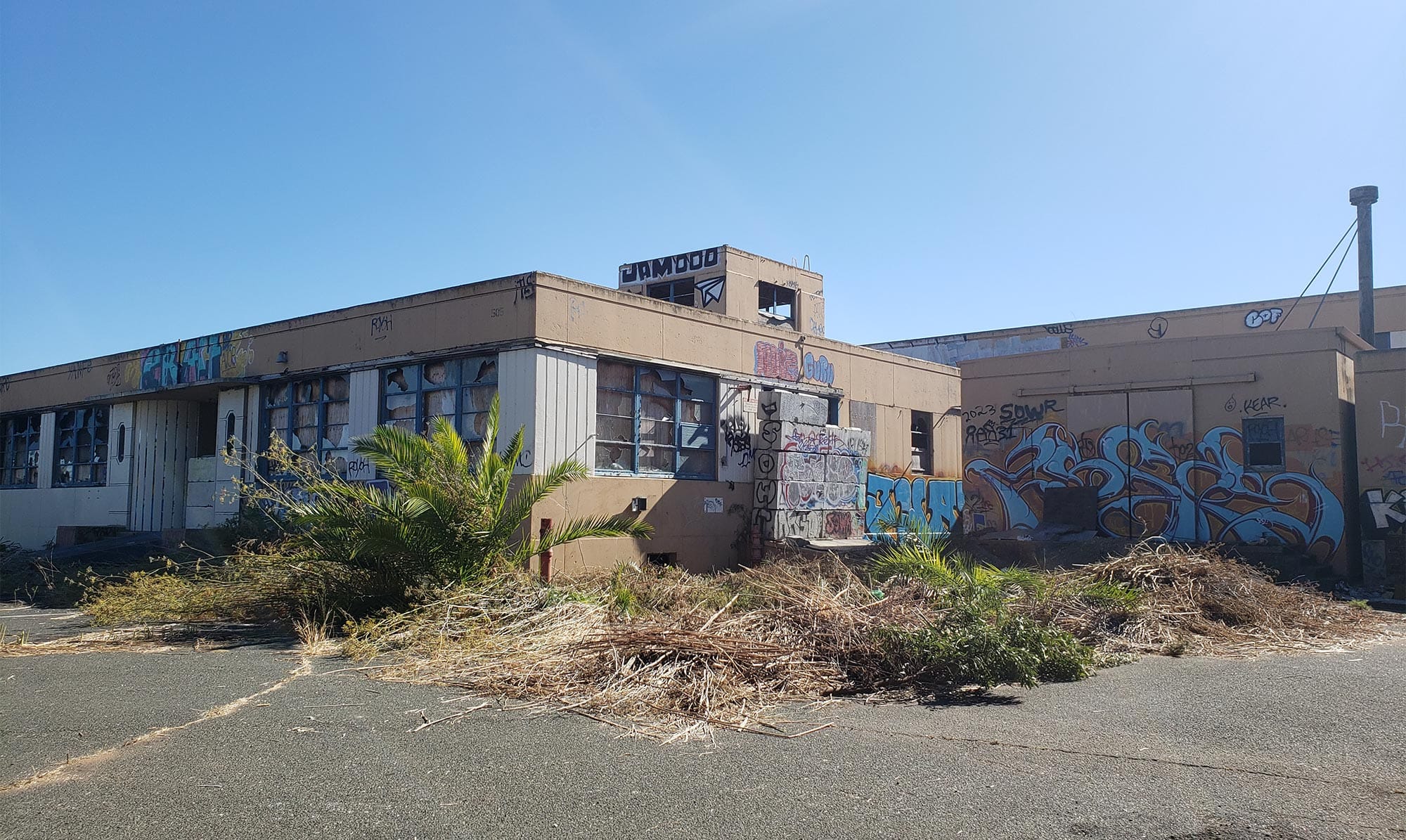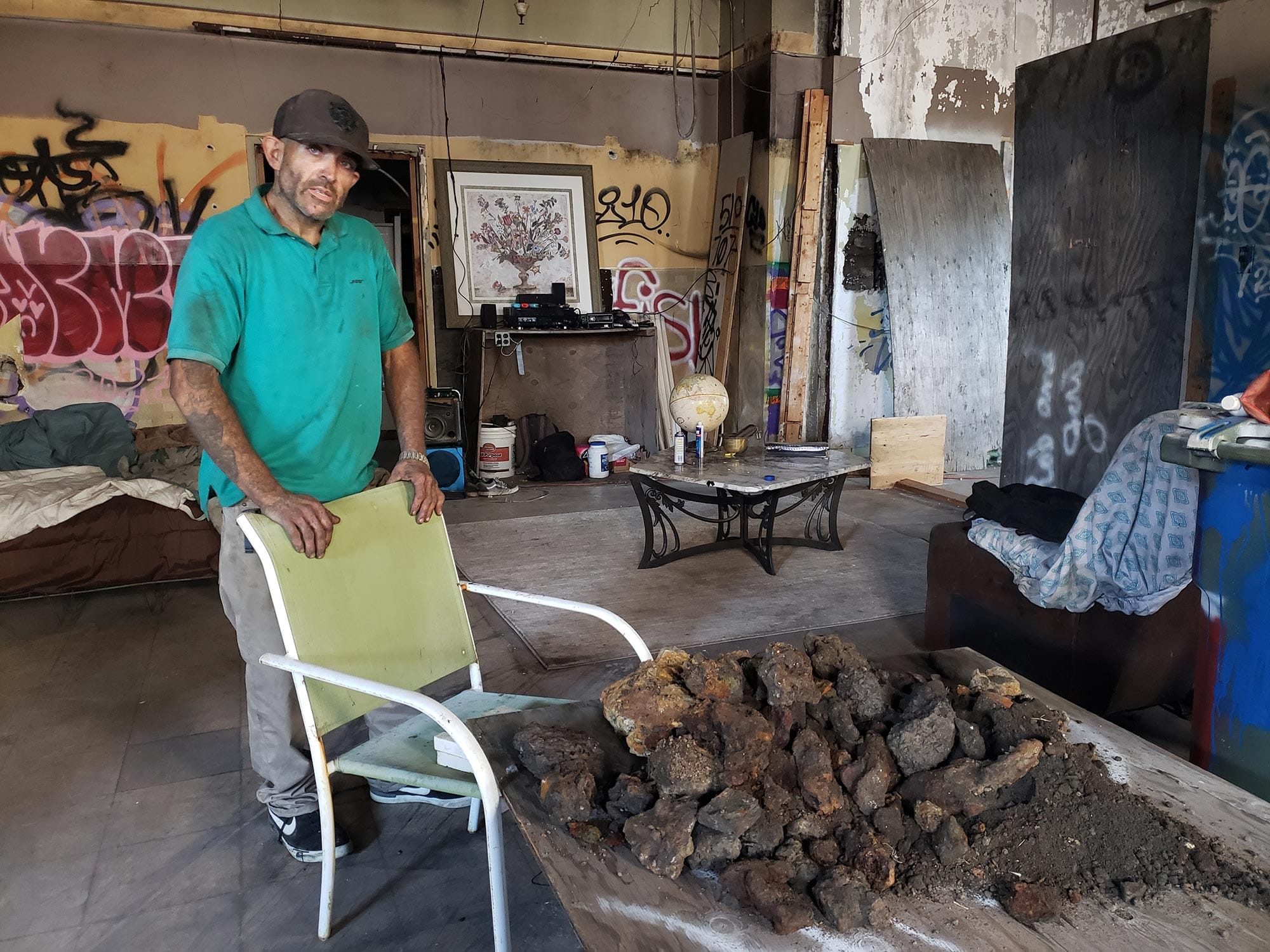VALLEJO – A group of homeless Vallejo residents filed a federal lawsuit against the city of Vallejo and Caltrans on Friday alleging that the agencies and their representatives improperly confiscate possessions and vehicles used for shelter.
The members of the Vallejo chapter of the National Union of the Homeless are seeking an injunction to prevent the city from removing their vehicles and belongings from a secluded parking lot next to an abandoned building on Mare Island. The residents of the camp said that they have nowhere else to go after being told to leave one location after another.
“This small community that we have is a safe place, it is a place we call home. Nobody gets hungry here and nobody is afraid,” encampment member Lisa Amarant, 61, wrote in the lawsuit. “It's a very amazing little place. We just want to live and we don't try and bother anyone and try hard to take care of our own. With no notice we risk losing each other and the safety that we have.”
Assistant to the city manager Natalie Peterson arrived at the camp on Aug. 27 accompanied by four police cars and eight officers to tell the group that they had to leave by Aug. 30, according to encampment resident Robert Toepfer.
Members of the group said that they felt that they were under imminent threat of losing their shelter so they filled out legal forms to request a court order to prevent the city from towing their RVs and trailers. Lawyers who provide legal support to chapters of the National Union of the Homeless provided the group with some guidance on which forms to fill out, but members of the camp drafted the complaint and filed the documents without legal representation.
City Manager Andrew Murray said in a statement that,“the City empathizes with the challenges faced by unhoused individuals and is actively developing additional affordable housing units in Vallejo.” But he said that the city has no comment relating to active litigation cases.
The City currently has two projects under construction that are intended to serve homeless residents; the 47-unit Broadway supportive housing project which faced fiscal challenges earlier in the year and the long delayed navigation center that will provide 125 shelter beds and an access point for a range of services. Both projects are expected to be complete by the end of the year.
“There are many more of these evictions happening,” said retired civil rights attorney Osha Neumann, who successfully sued CalTrans on behalf of homeless people in Oakland and Berkeley who had their possessions destroyed. “And there are legal bases to challenge them but the number of lawyers available to file a complaint and the required documents for them is not sufficient.”
Neumann is not involved in the case but he reviewed the documents for an interview with the Vallejo Sun. He said that the complaint does not meet the formal requirements because it does not include causes of action or facts showing why what the city wants to do would violate the listed Constitutional Amendments and laws.
However, he said that the personal accounts in the complaint do touch on issues that are constitutionally protected such as Fourth Amendment protections against unreasonable search and seizure and the 14th Amendment protection from citizens from being placed in danger created by the state.
Several of the plaintiffs also said that they are disabled and the city is required to provide accommodations for persons with disabilities, such as by providing more time or assistance if they are required to move, said Neumann.
The legal claims suggested in the lawsuit are not affected by the recent U.S. Supreme Court ruling that 8th Amendment protections against cruel and unusual punishment do not bar cities and counties from enforcing prohibitions against camping even when no local shelter space is available.
Plaintiffs that litigate a case without legal representation are often allowed some leeway in regard to legal procedures. Neumann said that even though the complaint does not assert the claims in a formal manner, a judge may be sympathetic to the issues described in the personal statements and grant a hearing on whether to issue a temporary restraining order.
The personal accounts in the lawsuit detail a series of encampment closures stretching back to the spring of 2023 that have left houseless residents with fewer and fewer options for a safe place to camp. Several of the plaintiffs described being evicted from Lemon and Derr Street, then moving to the Vallejo boat launch, which city officials also cleared, and then returning to Lemon and Derr, which swelled with campers facing limited options.
After police towed a number of vehicles from Lemon and Derr streets at the end of July and then finally closed the camp in August by placing concrete barriers along the streets, some residents of the camp moved to a location on Mare Island near Highway 37. The group was hoping to form a camp with rules to support working people and protect elders and those with disabilities.
A few weeks after the group moved to the new spot, Caltrans representatives and California Highway Patrol officers told members of the camp that they had to leave in 24 hours. Several of the plaintiffs noted the difficulty in moving their belongings in the limited timeframe and some reported losing important items as a result.
A couple members of the group searched for a new spot and found what they felt was an out of the way location at 505 Azuar St.

The plaintiffs in the lawsuit are all members of the Vallejo Homeless Union, which was established by Vallejo houseless residents in July. The newly-formed union has sent notice to city officials that they wish to be included in discussions on addressing homelessness so they can provide expertise and input on policy issues that affect their membership.
The Vallejo union is a local chapter of the National Union of the Homeless which was originally formed in the late 1980s and then saw renewed interest from organizers in 2019. The national organization offers training, resources and legal support to local chapters that are active in 11 states.
Peterson initially agreed to meet with the union in a July 5 email but union members received no response to follow up emails to set a date.
The broader membership of the homeless union has discussed working with the city to establish a model encampment at the fairgrounds or other locations, according to 505 Azuar St. resident and plaintiff Shawn O’Malley. Several of the residents feel that their camp could potentially serve as a model to create sanctioned encampments in select locations around the city.
“We have very simple rules: no fentanyl, no criminals, no loud noises or fireworks and you have to pack out your own garbage,” O’Malley said.
Joan Alford is 75 and has trouble walking so other members of the camp help her with garbage disposal and picking up the things she needs from mainland Vallejo. “This is a supportive community for me,” Alford said. “I’m dependent on their help, really. I feel safer being around people I know. At some of the other camps I have lived at you can’t always trust everyone.”
Some of the residents have gotten accustomed to monitoring the website “SeeClickFix,” to see if there are complaints from neighbors about their camp. Alford said that she has been dismayed by some of the comments on the site about homeless people. “It does not make any sense for us to be labeled as criminals just because we can’t afford to pay rent,” she said. “I don’t mind paying my portion but I need a little help.”
Only a few days after the group had moved to Azuar Street, a new complaint appeared on SeeClickFix. The posting included a photo taken from above the camp apparently by a drone flyover. Peterson showed up with officers to tell the campers to leave the next day.
The camp is about 300 yards from the nearest neighboring commercial building with no residential structures in the area. The residents’ vehicles and trailers are not visible from the road.
“We are trying to move somewhere out of the way where we would not be a bother to any nearby neighbors,” O’Malley said. “You would think that the city would be happy that we moved to the edge of town but it turns out they don’t want us anywhere.”
Since the initial posting on SeeClickFix, camp resident Cassandra Salinas said she saw a drone flyover the camp twice, and once at a very low altitude. “It's like someone is surveilling us to see if we are leaving.” she said.
Not all of the residents of the camp are members of the Vallejo Homeless Union, Daniel Hodges has lived at the location for three years and he is the only camp resident who lives inside the building.

Hodges has made a number of repairs on the building including painting and patching up some of the walls damaged by vandalism. He envisions the building as a resource center that offers job training in environmental restoration for people who are homeless. He said that now that the new residents showed up he does not have to worry that his tools will get stolen or that someone will vandalize the building while he is gone.
City maps of Mare Island show the property as a section of land that is “not yet transferred” from the U.S. Navy. City documents show that parcels on Mare Island are in various stages of ownership transfer in step with remediation and cleanup efforts that are still in progress. The process of transferring Mare Island parcels to city ownership began after the Naval Shipyard closed in 1996.
In June 2021, the Vallejo Times-Herald reported on allegations that city workers were exposed to asbestos during a clean-up project that took place inside the building. Hodges said that he is aware of the asbestos and that he takes precautions to prevent exposure.
Hodges and the new residents have been working together to remove tall weeds that have grown up around the building and they have also cleaned up garbage and debris around the site. The residents hope that their efforts to maintain the property will show that they can responsibly manage the site but they are relying on the lawsuit to stop the city from removing their vehicles in the near term.
Editor's note: this story has been updated to include a statement from Vallejo City Manager Andrew Murray.
Before you go...
It’s expensive to produce the kind of high-quality journalism we do at the Vallejo Sun. And we rely on reader support so we can keep publishing.
If you enjoy our regular beat reporting, in-depth investigations, and deep-dive podcast episodes, chip in so we can keep doing this work and bringing you the journalism you rely on.
Click here to become a sustaining member of our newsroom.
THE VALLEJO SUN NEWSLETTER
Investigative reporting, regular updates, events and more
- Housing
- homelessness
- government
- courts
- Vallejo
- California Homeless Union
- Osha Neumann
- Caltrans
- Natalie Peterson
- Lisa Amarant
- Robert Toepfer
- Daniel Hodges
- Joan Alford
- Shawn O'Mally

Ryan Geller
Ryan Geller writes about transitions in food, health, housing, environment, and agriculture. He covers City Hall for the Vallejo Sun.
follow me :




